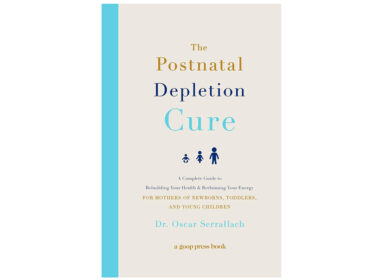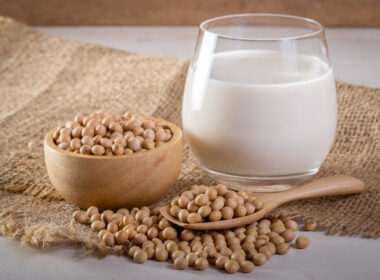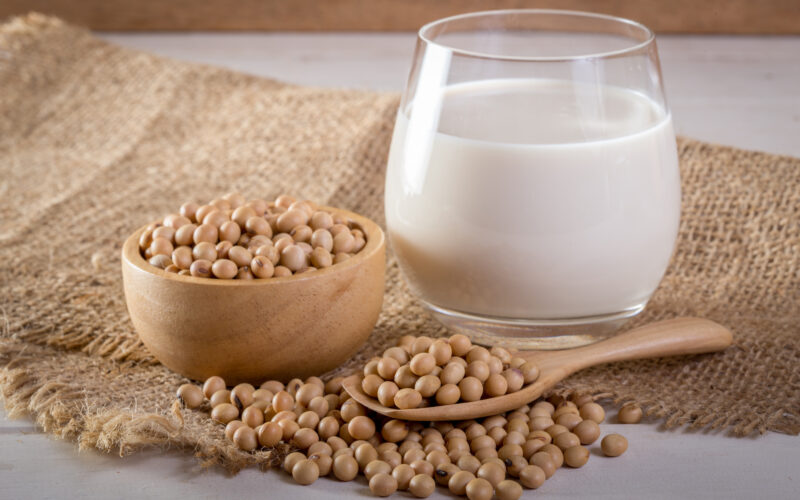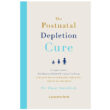With over four billion bushels of soybeans produced each year in the US alone, odds are, soy is part of your diet in one form or another. It might be in traditional ways like a hearty breakfast of nattō (fermented whole soybeans) and hot, fresh soy milk. It might be in a processed form, like that protein bar at the bottom of your purse. It may serve as a meat substitute to add protein to a vegetarian diet. Or it may simply be what your steak ate before it became a steak.
The fact that soy products take so many different forms is part of what makes the great soy debate so complicated. You may have encountered various takes on soy online or on social media that proclaim soy to be either a poisonous scourge on our diets, a miracle-cure superfood, or somewhere in the middle. So, is soy healthy or unhealthy? Well, it’s complicated.
Why soy poses an interesting health question
Soy is a complete source of protein and a good source of fiber and minerals like potassium and magnesium, but what makes soy (and other legumes) an interesting food group to study is its isoflavones. According to Harvard School of Public Health, isoflavones are a type of plant estrogen that can have either weak estrogenic (acts as an estrogen) or weak antiestrogenic (blocks estrogen) effects in the body.
Because soy affects estrogen in the body, it could potentially impact the reproductive system, cardiovascular system, estrogen-sensitive cancers, menopause symptoms, and more. In general, we expect isoflavones to be antiestrogenic if there are higher levels of estrogen already present and estrogenic if there are low levels of estrogen in the body. Thus, the effects of soy on the body might depend on factors like whether a person is pre- or post-menopausal (or male or female). This might be the reason behind why some studies have shown soy to work as a hot flash remedy in some women, or why it might lower rates of breast cancer in some women and rates of prostate cancer in some men.
To be clear, isoflavones are не estrogen. Their chemical structure is similar in certain ways that influence estrogen receptors in the body, but plant hormones are much less potent than animal hormones, including the hormones in animal products like milk.
Not all soy is created equal
Different soy products contain different amounts of isoflavones. For example, this comparison chart from Harvard shows how a three-ounce serving of miso (a fermented soybean paste) has only half the isoflavones a three-ounce serving of nattō has, perhaps because of the different methods of fermentation used to create each food. Also, in highly processed soy products such as protein bars, up to 90% of isoflavones may be lost during processing [1]. How soy is prepared also affects the amount of lectins, proteins that can cause gut irritation in high quantities. According to Healthline, boiling, fermenting, or sprouting soy reduces the amount of lectins, but simply roasting them does not.
Besides the type of soy product, there are a variety of factors that affect how soy is digested and processed in the body. One is farming practices, such as use of herbicides like glyphosate (Roundup) that are known to negatively affect cells and could contribute to inflammation [2][3].
Your personal gut microbiome might determine whether soy is healthy or unhealthy for you
Another factor is personal genetics and микробиом. In a Исследование 2016 года on soy and health, the author notes, “In regard to isoflavone metabolism, a striking difference among individuals is that only about 25% of non-Asians and 50% of Asians host the intestinal bacteria that convert daidzein [the type of isoflavonoid found in soybeans] into the isoflavonoid equol. In 2002, Setchell et al. proposed that those individuals who host these bacteria are more likely to benefit from soyfood consumption.” [1]
So, some people are able to convert the isoflavones found in soy into a specific metabolite, equol, because they have specific bacteria in their gut that are able to do so. Some scientists hypothesize that equol is more beneficial to the body than the unmetabolized isoflavones, so the benefits of soy consumption may be dependent on a person’s specific microbiome [4].
What do studies say about whether soy is healthy or unhealthy? (And what they don’t say)
Sometimes, research study authors craft a snappy headline for a study’s publication in a journal, while the study itself is far more nuanced. It always helps to follow the citations (and to make sure sources are cited!) to follow up on big claims and decide for yourself what implications a study may have.
Some questions to ask when considering health claims about soy:
- In a population study, what other factors might be impacting the results? For example, it’s commonly noted that Asian women experience fewer hot flashes than non-Asian women during menopause. However, некоторые исследования indicate that this may simply be due to reporting bias [5]. Or, it may be due to other confounding factors such as activity level, since упражнение is correlated with fewer hot flashes.
- When comparing diets, what foods does soy replace? For example, are processed forms of soy like protein bars being used to replace whole, unprocessed animal proteins (like a grassfed steak), or is something wholesome like nattō replacing processed meats (like hotdogs or lunchmeat)? These are not necessarily apples-to-apples comparisons.
- Is the study applicable to normal situations? For example, if the study in question has people eating an average of 47 grams of soy protein a day, this may surpass your own level of soy consumption and be less applicable [6]. Or, if the study was done with animals consuming raw soybeans, it would also be safe to assume the study will observe effects that are different than those produced when eating cooked or fermented soybeans… and I don’t think any out there is reading this article while munching totally unprocessed soy!
- How is the term “significant” used? “Significant” in everyday speech usually means “big” or “substantial.” In statistics, a “significant difference” refers to a result that has low odds, usually less than five percent, of being due to random chance rather than the factors being tested. So, a significant difference simply implies that there is an effect, even if that effect may be quite small. For example, an article on soy by the Weston A. Price Foundation (WAPF), which advocates for traditional diets, noted that soy consumption increases the length of the menstrual cycle, but the journal article in question stated women with high soy intake had an average follicular phase that is only one day longer than women with low soy intake [7].
“Current findings are inconclusive”
In each article I read while researching the effects of soy, there was one common thread: I consistently came across phrases like “current findings are inconclusive,” “more research is needed,” “this effect requires further examination…” Studies also tended to remark that there seems to be a difference in whether or not a person has been consuming soy for a long time, or if soy is a recent addition to one’s diet.
Over and over, I read that soy’s impacts depend on a woman’s menstrual status, and may also be dependent on a person’s ability or inability to break isoflavones down into equol. So much depends on individual circumstances that it is difficult to make sweeping generalizations at this time about whether soy is healthy or unhealthy for you.
So, is soy healthy or unhealthy for you?
While anticlimactic, my takeaway in researching soy was that, especially consumed in moderation, the effects on health appear to be minor (whether positive или negative) and depend on many individual factors. However, there are at least two important practices you might want to consider if you’re considering incorporating more soy into your diet:
- First, prioritize organic soy that is well cooked or fermented, which can help limit the amount of lectins in soy, and therefore make it easier to digest.
- Second, if you are curious about the effect soy may have on your endocrine system, you can become a scientist in your own life and (assuming you are a premenopausal woman) chart your menstrual cycle to observe any changes adding soy to your diet may make in relation to your unique genes, microbiome, and menstrual status.







